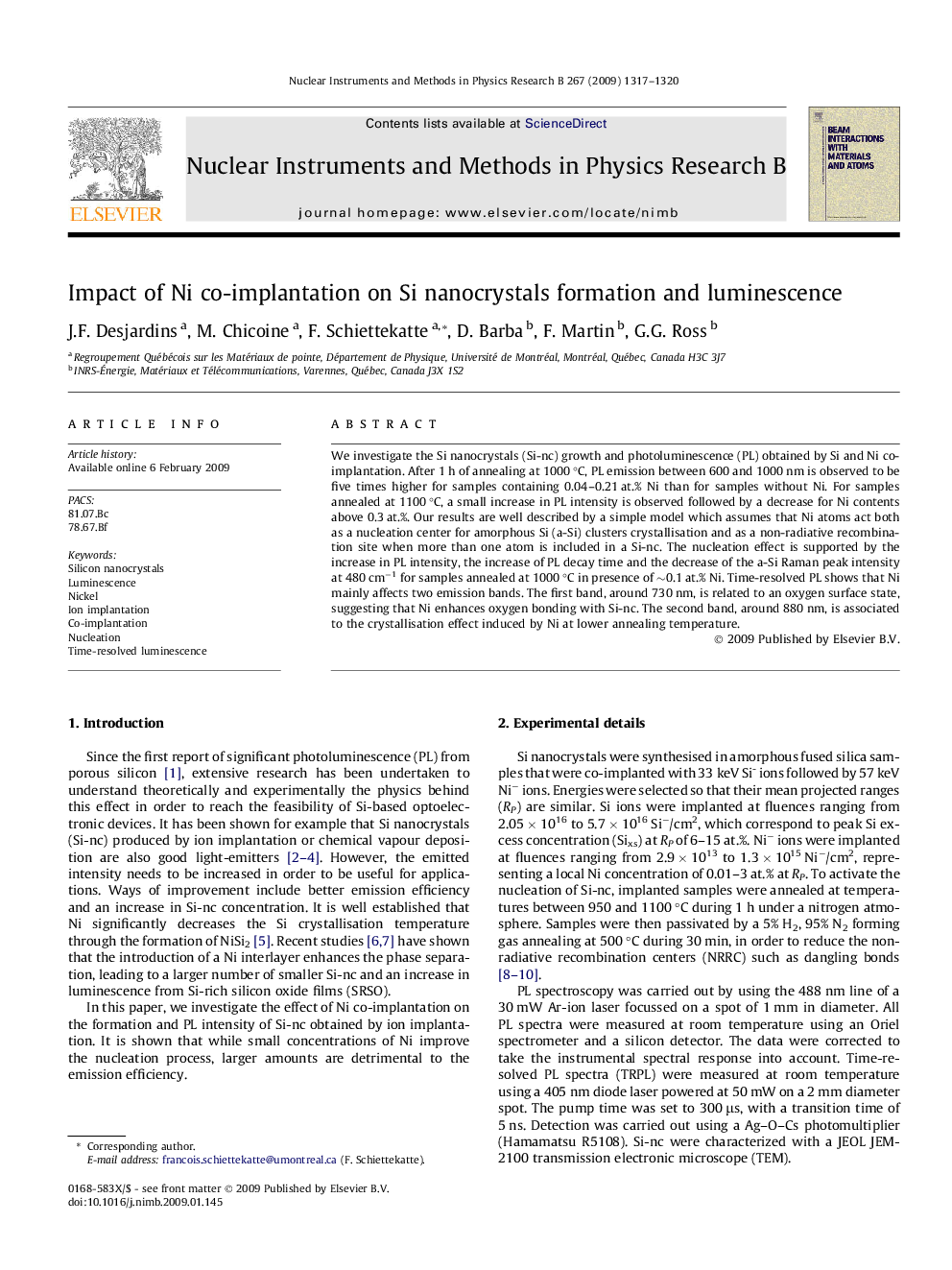| Article ID | Journal | Published Year | Pages | File Type |
|---|---|---|---|---|
| 1683936 | Nuclear Instruments and Methods in Physics Research Section B: Beam Interactions with Materials and Atoms | 2009 | 4 Pages |
We investigate the Si nanocrystals (Si-nc) growth and photoluminescence (PL) obtained by Si and Ni co-implantation. After 1 h of annealing at 1000 °C, PL emission between 600 and 1000 nm is observed to be five times higher for samples containing 0.04–0.21 at.% Ni than for samples without Ni. For samples annealed at 1100 °C, a small increase in PL intensity is observed followed by a decrease for Ni contents above 0.3 at.%. Our results are well described by a simple model which assumes that Ni atoms act both as a nucleation center for amorphous Si (a-Si) clusters crystallisation and as a non-radiative recombination site when more than one atom is included in a Si-nc. The nucleation effect is supported by the increase in PL intensity, the increase of PL decay time and the decrease of the a-Si Raman peak intensity at 480 cm−1 for samples annealed at 1000 °C in presence of ∼0.1 at.% Ni. Time-resolved PL shows that Ni mainly affects two emission bands. The first band, around 730 nm, is related to an oxygen surface state, suggesting that Ni enhances oxygen bonding with Si-nc. The second band, around 880 nm, is associated to the crystallisation effect induced by Ni at lower annealing temperature.
